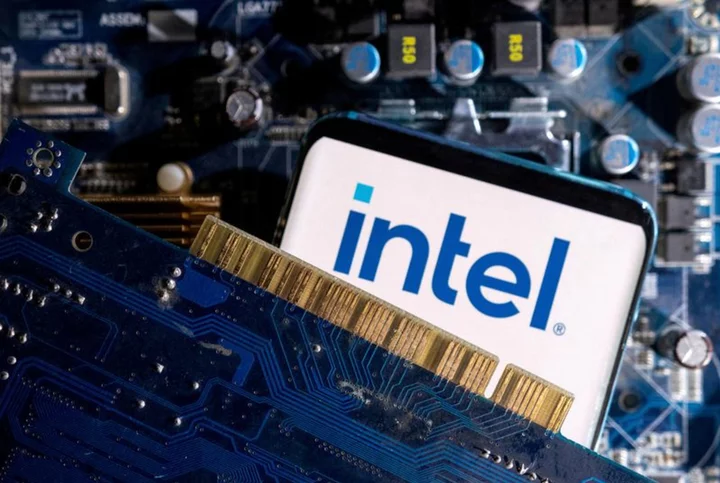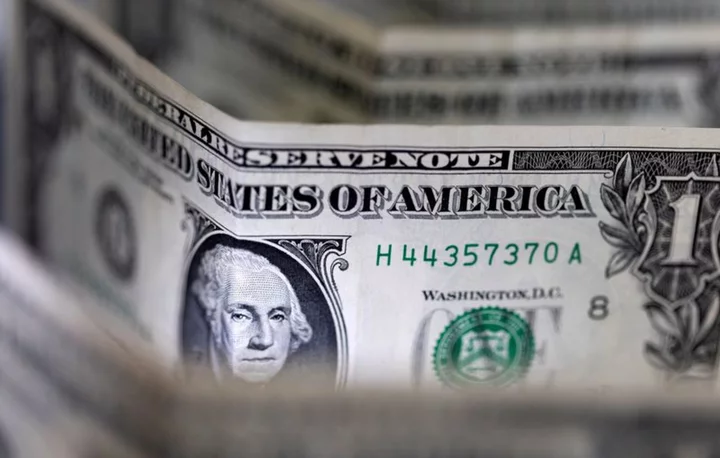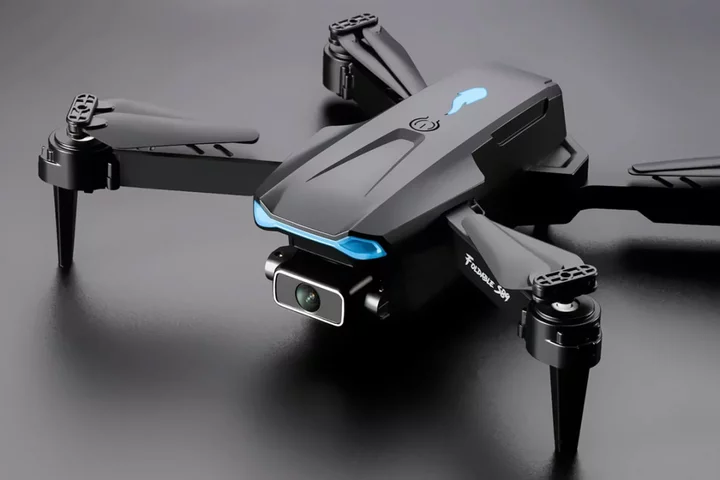
Germany rules out Intel's demand for subsidies for chip plant - FT
Germany's Finance Minister Christian Lindner refuses to meet Intel Corp's demands for higher subsidies for its chip plant
2023-06-11 12:29

Ron DeSantis booed at Jacksonville vigil as police say racist Florida shooter bought weapons legally – live
Florida governor Ron DeSantis was heckled by mourners at a vigil held in Jacksonville for the three victims killed in a racially motivated attack. Two men and a woman were killed on Saturday by a 21-year-old white man named Ryan Palmeter, who “hated Black people”. The victims were identified as Angela Michelle Carr, 52, Anolt Joseph “AJ” Laguerre Jr, 19, and Jarrald De’Shaun Gallion, 29. As the governor began speaking at the vigil on Sunday, many members of a crowd of over a hundred people booed Mr DeSantis, forcing him to step back from the microphone. Ju'Coby Pittman, a Jacksonville city councilperson who represents the neighbourhood where the shooting took place, stepped in and asked the crowd to listen. The shooting took place at a Dollar General store just blocks from the historically-Black Edward Waters University. Shortly before the gunman went on a killing spree, his parents called law enforcement to say they had found a manifesto. The gunman had reportedly called his parents ahead of the attack and told them to look at his computer. Sheriff TK Waters described those writings as a “disgusting ideology of hate”. Read More Florida shooting victim planned to spend Saturday with his daughter. He was killed before he could. Biden demands US do better on racism amid Jacksonville shooting: ‘Hate must have no safe harbor’ Chilling CCTV shows Jacksonville shooter entering Florida store during deadly rampage Everything we know about the Florida Dollar General Shooting
2023-08-28 17:35

To Meet Climate Goals, Gulf Countries Will Have to Overhaul Everything
In Dubai, it’s normal to leave your air conditioning running at all times, even if you go away
2023-11-13 21:39

Why is the US dollar so strong again?
By Harry Robertson LONDON If investors agree on one thing this year, it's that the dollar is going
2023-05-18 14:13

‘Kind’ 10-year-old boy killed alongside father on final day of holiday in Turkey
An Irish father and his 10-year-old son have died in a crash on holiday in Turkey just hours before they were due to fly home. Eoin Fitzpatrick, 36, and his son Dylan were on holiday at the tourist resort of Alanya when the moped they were riding was hit by a bus. The crash happened at 3.30pm on Monday, just hours before they were due to fly home to Portlaoise in Co Laois, Ireland. Mr Fitzpatrick's other son, 14-year-old Cian, was with his father’s partner and her children at the time and did not witness the crash. The 10-year-old’s mother Claire Dowling has now paid tribute to her son after arriving in Turkey to comfort Cian. She told the Irish Mirror said she is just “glad they’re together” as she described her son as a “kind” boy who loved life. “My smallest boy. I just hope that when it happened – I don’t know how it happened – that he was smiling,” she added. “He loves me and he loves his daddy too and I am so happy that they’re okay together somewhere. “He was such a character and anyone who met him would have said the same. He is 10 years of age and he still holds my hand and tells me he loves me, no matter where we are. He is so, so kind. “What breaks my heart is he was supposed to land today and I know he was dying to come home.” Another family member told the Irish Mirror that it could be anything from a week to 10 days before the remains of Mr Fitzpatrick and his son are returned to Ireland. Laois-based Sinn Fein TD Brian Stanley described the deaths as an “awful tragedy”, adding: “My heartfelt sympathies go to the mother of the boy and also to the parents of the deceased man and the grandparents on both sides. “In the days and weeks ahead, the community in Portlaoise will rally around both families and hopefully be able to give them some support and comfort.” A 28-year-old Turkish national who was believed to be driving the bus was arrested following the crash, which happened close to a pedestrian crossing on Monday afternoon, according to local media reports. Mr Fitzpatrick and Dylan were pronounced dead after medics and police rushed to the scene. The Department of Foreign Affairs has said it is providing consular assistance in the case. Read More Turkey crash: Fifteen people killed and 22 injured as bus collides with emergency vehicles 12 killed in multi-vehicle crash in Turkey's Hatay province Bus collision at accident site leaves 15 dead in Turkey Ukraine and Pakistan call for restoring the Black Sea grain deal after talks in Islamabad Turkey hikes interest rates in another sign of economic normalcy. But markets expected more Flooded with sightseers, Europe's iconic churches struggle to accommodate both worship and tourism
2023-07-20 21:42

Best Reactions to Dolly Parton's Halftime Show Performance
All the best reactions to Dolly Parton's Thanksgiving Day halftime performance.
2023-11-24 07:50

Save more than $900 on this refurbished MacBook Pro
TL;DR: As of July 24, get this 2017 refurbished Apple MacBook Pro 13.3" for only
2023-07-24 17:00

Camp in comfort with this pop-up cabin for your car, on sale for $310
TL;DR: Through May 31, you can snag the Carsule pop-up cabin on sale for just
2023-05-29 17:00

Rihanna, A$AP Rocky have second child together, another boy they named Riot Rose, reports say
Rihanna and A$AP Rocky are giving the world the first look at their second child together, a boy they’ve named Riot Rose
2023-09-20 03:20

Stephen Colbert roasts Speaker Mike Johnson for his attempts to bring 'Bible worldview' into governance
'He's clearly gonna ask the rich to sell all their possessions and give the money to the poor,' said Stephen Colbert
2023-10-31 20:56

US Mortgage Applications for Purchases Drop for a Fourth Week
US mortgage applications for home purchases fell for a fourth week as 30-year fixed rates held close to
2023-06-07 20:03

Lily-Rose Depp's controversial role in HBO's 'comically bad''The Idol' sparks calls for her career to be 'protected'
'The Idol', which has been described as 'torture porn,' has raised concerns it may negatively impact Lily-Rose Depp's budding career
2023-06-12 19:39
You Might Like...

IShowSpeed accuses Roblox players of 'sexually assaulting' him after flashing incident: 'Can you stop bro?'

Internet labels Fox News anchor Sean Hannity 'loser' over his remark about Hunter Biden's whereabouts

Hedge Fund Hunts for Next Australia Lithium Winner on Deal Craze

Get this HD camera drone for more than $150 off

Why Is My Turkey Wearing Frilly Paper Hats On Its Legs?

After long wait, Virgin Galactic begins commercial spaceflights

Fans in India rejoice as superstar actor Rajinikanth's latest movie hits theaters

Iowa Republicans pass new bill banning almost all abortions after six weeks
